SUMMARY
This is AI generated summarization, which may have errors. For context, always refer to the full article.
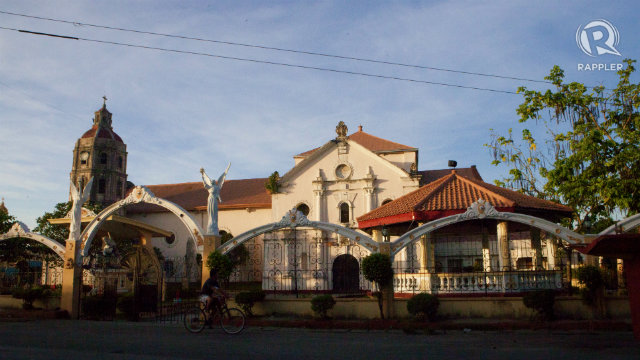
MANILA, Philippines – After stepping inside Betis Church, look up and prepare to be mesmerized. Biblical stories spring to life right above your head.
The majestic wall-to-ceiling murals have given rise to the church’s nickname, the “Sistine Chapel of the Philippines.”
Yet for those who have seen Michelangelo’s legendary frescos in the Sistine Chapel, the comparison falls flat. And for those who have visited Betis Church in Guagua Pampanga, the moniker glosses over what unique features make the church worth a visit in its own right.
Judge for yourself how the churches measure up by taking this 10 step multimedia tour of Betis Church in photos captured by Beth Frondoso and videos shot by Katherine Visconti.
1. Take in the view from outside. Though sediment has noticeably built up on the facade of the Betis Church, its charming, curling details are still visible.
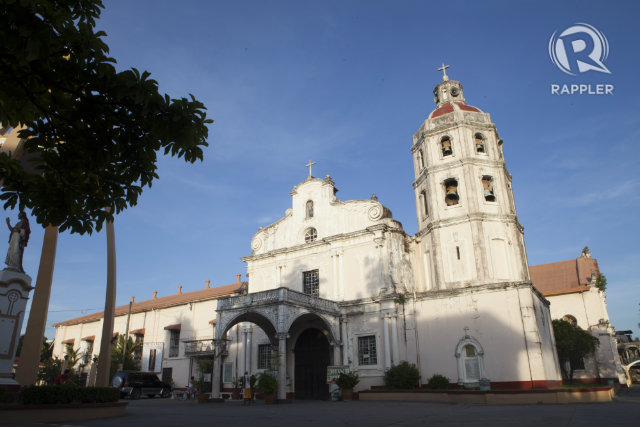
The Sistine Chapel may actually be the ‘plain Jane’ of the two when it comes to exteriors. From the outside, the chapel appears to be a brick rectangular building with few noteworthy details. But ultimately, both churches prove the old cliche that it’s what’s on the inside that matters most.
2. Pass through the ‘doorway to heaven.’ Said to be carved by a local craftsman, the doors show angels passing up and down the pathway to heaven, in a recreation of Jacob’s dream in the Book of Genesis. Walking through what is known as “Jacob’s Ladder,” visitors symbolically and literally enter the church, their bridge to heaven on earth.
3. Step onto the wooden floor. The Betis Church, which according to church material was built around 350 years ago, is unique for its wooden floors. Many other churches, including the marble-floored Sistine Chapel, opt for stone floors that are expected to withstand the test of time.
According to Betis native and Pampanga Auxiliary Bishop Pablo Virgilio David, the town consistently worked to maintain the church’s wooden floor, even in the face of floods. “And it’s the only church with a wooden floor up to now. The people have preserved it,” he said.
“It suffered some [retouching from] the later generations but to a great extent it still has its integrity,” he added.

A baroque church, Betis is showered in an explosion of ornamentation that manages to not feel ostentatious. The gold and pink hues of the detailing, together with the wood floor, lend the church a warmth and glow.
“We love to say that when we come home to Betis, at least we’re coming home to the same church… that gives us the same warm and homey feeling,” said David.
4. Notice the intricacies of the wood carvings. It shouldn’t take long for visitors to see that Betis is fond of wood. Many of the delicate details and statues inside the church are carved out of wood.
The carving tradition has been handed down from generation to generation in Betis.
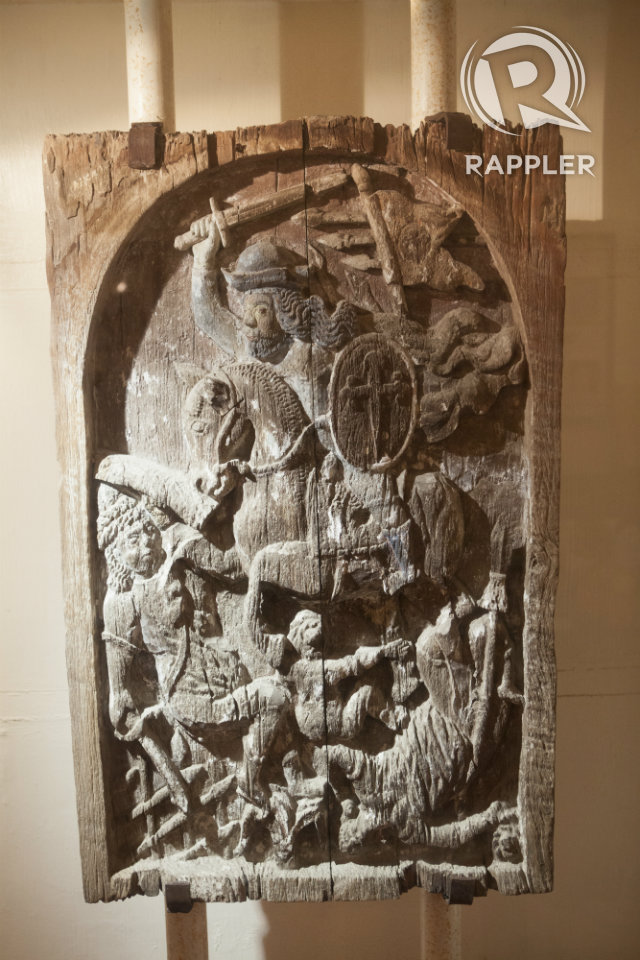
Even today the “majority of the people here are carpenters and carvers that is why there is really a celebration for Saint Joseph,” the patron saint of carpentry, on Easter Monday, explained Banjo Serano, President of the Parish Pastoral Council at Betis.

5. Crain your neck up to see the main masterpiece.
The Sistine Chapel and the Betis Church both have painted ceilings but the paintings themselves are completely different.

Take for example, Michelangelo’s depiction of the Last Judgment. The figures are masterfully menacing, chaotic and nude. The murals in Betis are tame and happy in comparison. In the central mural of the Betis Church, Jesus radiates light. He is surrounded by men and women on their knees in awe.
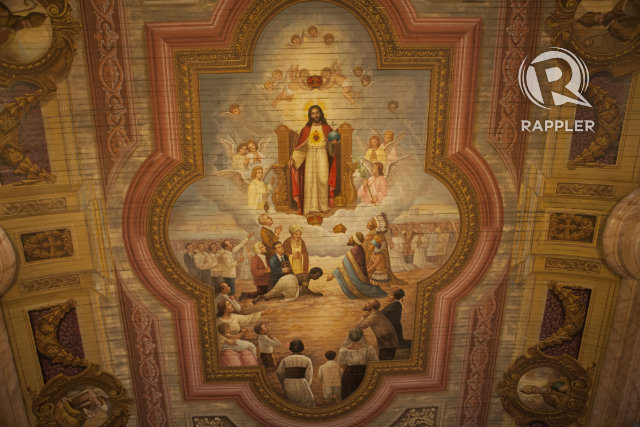
6. Try to find the new apostle.
Seemingly images of the 12 apostles line the walls of Betis Church. But on closer inspection, it’s clear that one of them wasn’t among the men originally chosen by Jesus.
The Betis Church camouflages in the portrait of influential Christian missionary Paul. His portrait and Peter’s directly face each other, as the two pillars of Christian faith.
![A NEW APOSTLE. "The simple reason is that Paul was the new apostle of our era…. After the classical list of the apostles, it was really Paul who propagated Christianity… Maybe they include Paul as an apostle [because] we owe much of our christian propagation [to him]," explains Banjo Serano, President of the Parish Pastoral Council at Betis. Screenshot by Rappler/Katherine Visconti A NEW APOSTLE. "The simple reason is that Paul was the new apostle of our era…. After the classical list of the apostles, it was really Paul who propagated Christianity… Maybe they include Paul as an apostle [because] we owe much of our christian propagation [to him]," explains Banjo Serano, President of the Parish Pastoral Council at Betis. Screenshot by Rappler/Katherine Visconti](http://go.rappler.com/images/paul.jpg)
7. Admire the old acoustics. Watch and listen to a demonstration by Parish Pastoral Council President Serano on how the old pulpit was designed to magnify the speaker’s voice.
8. Appreciate the altarpiece of the church. The intricately carved, heavily gilded and ornately decorated retablo is the centerpiece of Betis Church.
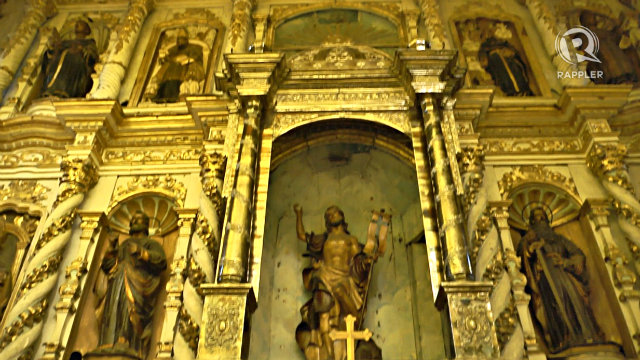
9. Hear the clacking of the matraca or the chiming of bells.
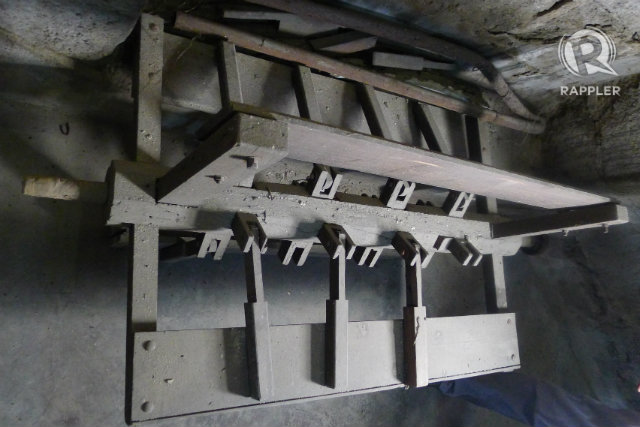
10. Wave goodbye to the Betis Tree.
The Sistine Chapel may have its own painted forbidden tree for Adam and Eve, but Betis has its own Betis tree.
You will find at least two on church grounds. An old Betis tree stands at the side of the church in a green cleaning that was once a cemetery. While a younger tree stands by the main gate.
It is unknown if the town was named after the tree, but old local legend says it was.
– Rappler.com
Add a comment
How does this make you feel?
There are no comments yet. Add your comment to start the conversation.